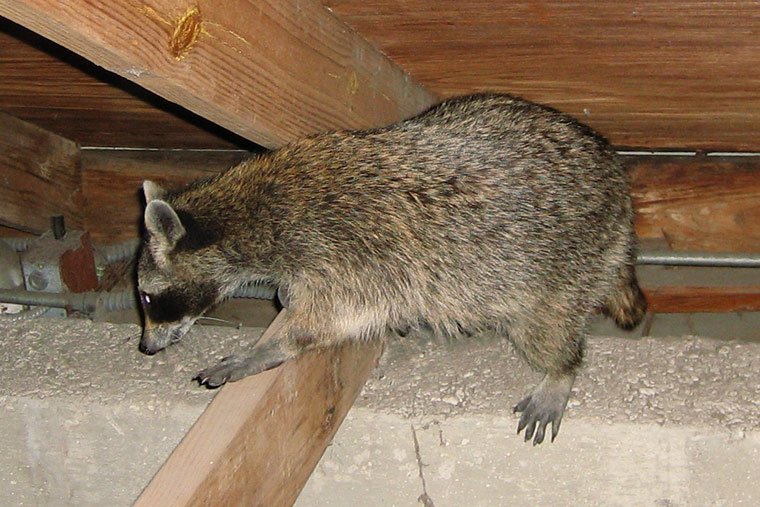- info@wildlife-removal.com
Call us for help in your town
Wildlife Removal Education
Easy Ways of Getting Raccoons Out of Walls
Need raccoon removal in your hometown? We service over 500 USA locations! Click here to hire us in your town and check prices - updated for year 2020.
You'll know if you have raccoons in your walls, because you will no doubt hear them scuffling and moving around. In most cases, one raccoon will usually mean a female, and a female is never alone for very long. They're social animals to start with; they quite like hanging out with each other. Not only that, but females will have kits — probably around 2 to 4 of them — between spring and late summer.

Also read about:
How to get raccoons out of the attic
How to remove raccoons from a chimney
How to remove raccoons from a house
Noises raccoons make when they live in your house
How will you know that it is a raccoon and not a rat or other, smaller animal? Raccoons are larger, heavier, and actually quite clumsy at times. They also don't seem to care how much noise or mess they make. Smaller kits will call to their mothers, usually at night because they are nocturnal, and you may even hear older raccoons growling or chattering away to each other. Again, because they are nocturnal, you will more likely hear these noises from dusk onwards, stopping at dawn.
How do you get raccoons out of walls? You should work out how it got there first. In some cases, the raccoon may have broken in through the attic, wandered around the wall cavities, and either found a perfect place to build a nest, or gotten itself a little stuck. The latter can happen quite frequently; the raccoon seemingly unaware of just how much ‘junk' is in its furry little ‘trunk'.
If the raccoon HAS gotten into the walls by way of the attic, you may have some luck heading into the attic yourself. Can you see down into the wall cavities? Can you see the raccoon, or evidence that is has been down there? With gloved hands, you might be able to reach it, although we don't recommend trying to get close to the vicious animal if you are not appropriately protected. If the mother is not in the nest but the babies are, you can grab them in the same way, using them as bait in a trap to capture the mother too.
When your hands can't quite reach, a snare pole can come in handy. Most wildlife rehabilitators will have one of these at their disposal, although, will only rely on it when no other methods have worked. If an animal has gotten stuck, it obviously can't move itself easily and will have no choice but to either intervene yourself, or call in a rehabilitator to get the job done.
If none of these options are available to you, you may actually find yourself in a position where you need to physically cut out a portion of the wall in order to remove the raccoons hiding behind. You will need to be pretty sure you know where the animal is for this, or leave the job in the capable hands of the experts — wildlife rehabilitators. You must remember that any damage you create must then be cleared away, so be prepared to fix the wall once you've cut a chunk out of it.
Go back to the Raccoon Removal page, or learn tips to do it yourself with my How to Get Rid of Raccoons guide.
Easy Ways of Getting Raccoons Out of Walls
raccoongetoutofwall.html - Easy Ways of Getting Raccoons Out of Walls


















